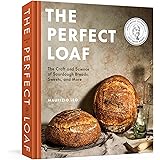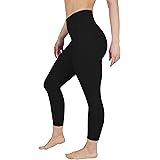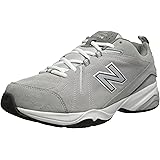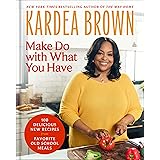The quest for the best bread for your health is a common dilemma. Many people struggle with confusing labels. This leads to unhealthy choices. The video above highlights crucial differences. It explains why many supermarket options disappoint. This article expands on those insights. We will provide a comprehensive guide. You can make truly informed decisions.
The central issue stems from ingredient lists. Most commercially available breads contain harmful components. Refined flours and additives are commonplace. This makes finding a genuinely healthy loaf difficult. However, solutions exist. Understanding labels is vital. Making your own bread at home is the ultimate answer.
Understanding White Bread: The Refined Reality
White bread often forms a staple in many diets. However, it lacks nutritional value. The video correctly identifies its core ingredients. These include maida, sugar, and refined vegetable oils. Maida is essentially refined wheat flour. It is stripped of beneficial nutrients. Crucial fiber and vitamins are removed during processing.
Consequently, white bread offers empty calories. Its consumption can lead to rapid blood sugar spikes. This effect contributes to energy crashes. Sustained high sugar intake also increases disease risk. It is important to recognize these facts. Making healthier choices becomes easier with this knowledge.
The Problem with Maida and Refined Flour
Maida undergoes extensive processing. The wheat kernel’s bran and germ are removed. These parts hold the most fiber and nutrients. What remains is the starchy endosperm. This refined flour acts much like sugar in the body. It causes quick glucose absorption.
This rapid absorption burdens the pancreas. It must produce more insulin. Over time, this can lead to insulin resistance. This is a precursor to type 2 diabetes. Furthermore, a diet rich in refined flour often lacks essential micronutrients. This contributes to various health issues. Therefore, avoiding maida is a wise choice.
The “Brown Bread” Deception: Reading Labels Critically
Many consumers opt for brown bread. They believe it is a healthier alternative. The video, however, reveals a stark truth. Most brown breads are a scam. Their brown color is often artificial. Molasses and caramel coloring create the illusion of health.
Always inspect the ingredient list. The first ingredient indicates its highest percentage. This follows FSSAI guidelines. If “maida” or “refined wheat flour” is listed first, avoid it. This “brown bread” is essentially white bread in disguise. It offers no real health advantage.
Decoding Ingredient Labels for Truly Healthy Bread
Effective label reading requires attention. Look beyond marketing claims. Phrases like “multi-grain” or “whole grain goodness” can mislead. Always prioritize “100% whole wheat” or “100% whole grain.” This specific wording ensures the bread contains the entire grain kernel.
Furthermore, check for hidden sugars. Sugar comes in many forms. Dextrose, corn syrup, and high-fructose corn syrup are common. Also, avoid excessive preservatives and artificial ingredients. A shorter ingredient list is generally better. It indicates less processing. This leads to a healthier choice for you.
What Makes a Truly Healthy Bread?
A genuinely healthy bread uses whole, unprocessed ingredients. Whole grains are paramount. They provide essential dietary fiber. Fiber aids digestion. It helps maintain stable blood sugar levels. This contributes to sustained energy.
Furthermore, whole grains offer vital nutrients. These include B vitamins, iron, and magnesium. Look for breads made with diverse whole grains. Rye, oats, and barley are excellent options. Sprouted grain breads also offer enhanced nutrition. They are often easier to digest. Sourdough bread, when made with whole grains, is another fantastic choice.
The Power of Dietary Fiber in Your Bread
Dietary fiber is a cornerstone of good health. Whole grains are rich in both soluble and insoluble fiber. Insoluble fiber adds bulk to stool. It promotes regular bowel movements. This helps prevent constipation. Soluble fiber helps lower cholesterol. It also stabilizes blood sugar. Choosing fiber-rich bread supports digestive health. It boosts overall wellness.
Beyond the Label: Ingredients to Avoid
Even if a bread claims to be “whole wheat,” scrutinize it. Many commercial breads contain undesirable additives. These can negate any health benefits. Recognizing these ingredients is crucial. It empowers you to make better choices.
Avoid breads with hydrogenated oils. These contain trans fats. Trans fats raise bad cholesterol. They lower good cholesterol. High fructose corn syrup is another major concern. It contributes to obesity and other metabolic issues. Artificial flavors, colors, and excessive preservatives should also be avoided. Your body deserves real food ingredients.
The Ultimate Solution: Homemade Bread for Optimal Health
Finding truly clean bread is challenging. The video wisely suggests making it at home. This approach gives you complete control. You select every single ingredient. This ensures purity and nutritional integrity. You can avoid all harmful additives. It is the most reliable way. You get truly healthy bread.
Baking bread at home is a rewarding process. It guarantees freshness. You can experiment with different whole grain flours. This introduces a variety of nutrients. Furthermore, homemade bread often tastes superior. It provides immense satisfaction. This makes the effort worthwhile.
Benefits of Baking Your Own Bread
Baking at home offers numerous advantages. You control the quality of ingredients. You can choose organic flours. You can avoid unwanted sugars and oils. Furthermore, it can be more cost-effective. Store-bought specialty breads are expensive. Homemade versions are typically more economical. This saves money in the long run.
The aroma of freshly baked bread is also delightful. It fills your home with warmth. It adds a personal touch to your meals. Moreover, the act of baking can be therapeutic. It connects you to your food. This provides a deep sense of accomplishment. It is a fantastic practice for improved health.
Choosing the Right Flours for Homemade Healthy Bread
The choice of flour dictates your bread’s quality. Whole wheat flour is a great starting point. Ensure it is 100% whole grain. Rye flour offers a distinct flavor. It is rich in fiber. Spelt flour is another ancient grain. It provides good texture. Oat flour adds a lovely softness. It boosts heart-healthy beta-glucans. Mixing different flours can create unique breads. This enhances nutritional complexity. Experiment to find your favorite combinations.











